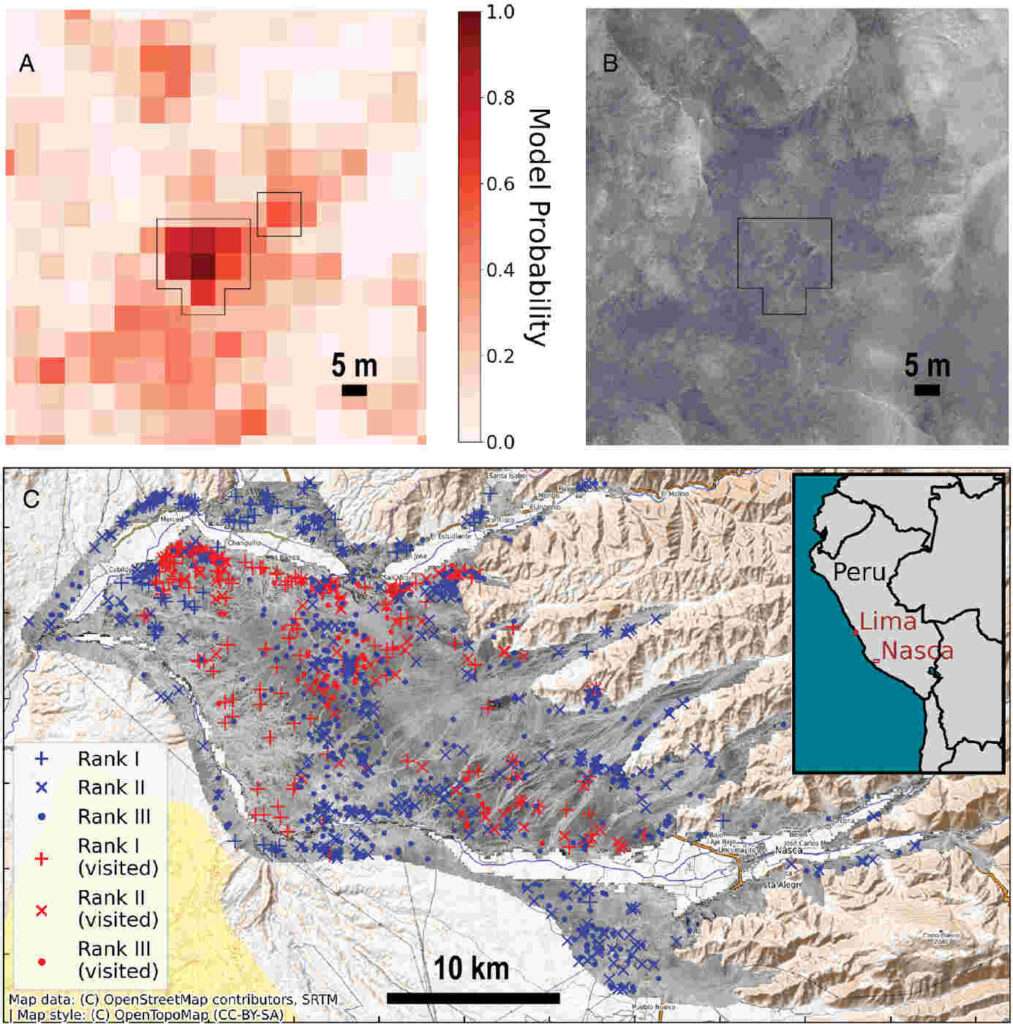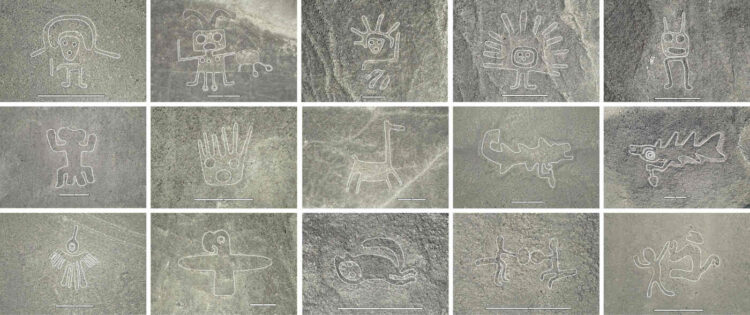In a groundbreaking development, artificial intelligence has led to the discovery of over 300 new Nazca geoglyphs in Peru, nearly doubling the number of known figurative geoglyphs in the region. This technological breakthrough has not only accelerated the pace of archaeological discoveries but also provided new insights into the purpose and significance of these ancient desert artworks.
The Nazca Lines, a UNESCO World Heritage site in southern Peru, have long captivated researchers and the public alike with their massive scale and mysterious origins. Now, thanks to the power of AI, our understanding of these enigmatic desert drawings has taken a quantum leap forward.
According to a new study published in the Proceedings of the National Academy of Sciences (PNAS), researchers have identified 303 previously unknown figurative geoglyphs on the Nazca Pampa and surrounding areas. This discovery was made possible by deploying an AI system trained to detect the faint outlines of these ancient artworks in high-resolution aerial imagery.
Dr. Masato Sakai, a lead researcher on the project, explains the significance: “It took nearly a century to discover a total of 430 figurative Nazca geoglyphs. With our AI-assisted approach, we were able to find 303 new geoglyphs in just six months of field survey. This is a game-changer for archaeological research in the region.”
The AI system was particularly effective at identifying smaller, relief-type geoglyphs, which are notoriously difficult to spot with the naked eye. These geoglyphs, averaging only 9 meters in size, often depict human figures, domesticated animals, and decapitated heads.
One of the most intriguing findings from this new research is the clear distinction between two types of Nazca geoglyphs: the smaller relief-type and the larger line-type figures. Dr. Sakai notes, “We’ve found that these two types of geoglyphs differ not just in size and style, but also in their subject matter, distribution, and likely purpose.”
The study reveals that 81.6% of relief-type geoglyphs depict human-related motifs or things modified by humans, such as humanoid figures, decapitated heads, and domesticated animals like llamas. In contrast, 64% of the giant line-type geoglyphs primarily represent wild animals.
Furthermore, the distribution of these geoglyphs across the landscape provides clues to their function. Relief-type geoglyphs are typically found within viewing distance (an average of 43 meters) of ancient walking trails that crisscross the Nazca Pampa. This suggests they were likely created and viewed at an individual or small-group level.
On the other hand, the massive line-type geoglyphs are closely associated with an elaborate network of straight lines and trapezoids, averaging just 34 meters away from these features. Researchers believe these larger geoglyphs were probably built and used for community-level ritual activities.
Dr. Sarah Parcak, an expert in satellite archaeology not involved in the study, commented on the findings: “This research demonstrates the immense potential of AI in archaeology. It’s not just about finding more geoglyphs – it’s about understanding the landscape as a whole and how ancient peoples interacted with it.”

The study also highlights the urgent need for conservation efforts. As climate change intensifies, extreme weather events pose an increasing threat to these fragile desert artworks. The researchers hope that their AI-assisted approach will lead to better strategies for managing and protecting this invaluable cultural heritage.
Looking ahead, the team estimates that at least 248 additional AI-proposed figurative geoglyphs are likely to be discovered in future field surveys. This promises to further enrich our understanding of the ancient Nazca culture and its remarkable artistic legacy.
As we stand on the brink of a new era in archaeological discovery, one thing is clear: the marriage of cutting-edge technology and painstaking fieldwork is unveiling the secrets of our past at an unprecedented rate. The Nazca Lines, it seems, still have many stories to tell.
Source: PNAS




